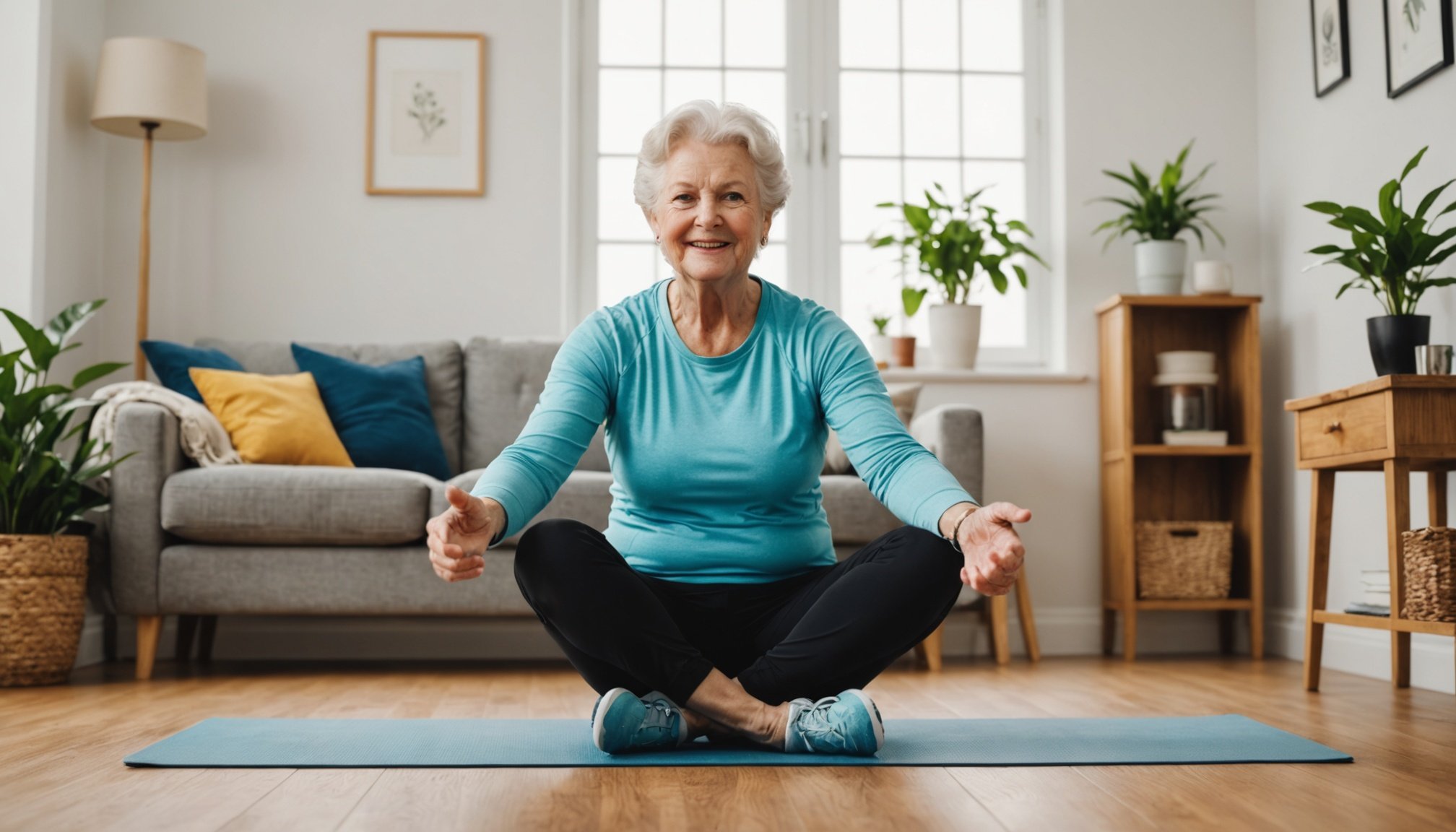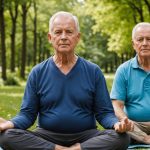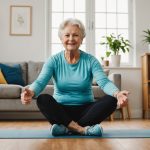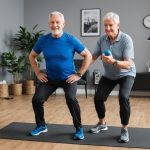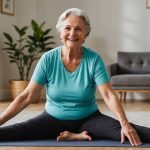Understanding the Unique Fitness Needs of Seniors
With the natural physical changes that accompany aging, it’s crucial to tailor age-appropriate exercises for seniors. As the body ages, muscle mass tends to decrease, and joints may become stiffer, affecting mobility and strength. This means that the fitness needs of older adults differ significantly from those of younger individuals.
Creating a tailored fitness routine is essential to accommodate these changes and maximise health benefits. Such routines should focus on improving flexibility, balance, and endurance without overwhelming the body. Gentle activities like walking, stretching, yoga, and water aerobics are excellent examples of age-appropriate exercises that can help maintain overall fitness levels.
Topic to read : Unlocking Healing: The Transformative Impact of Virtual Reality Therapy on PTSD Patients
The benefits of regular exercise for older adults extend beyond physical health. Engaging in consistent exercise routines can improve mental well-being, reduce the risk of chronic diseases, and enhance social engagement. Regular activity also supports better balance and coordination, significantly reducing fall risk—a common concern among the elderly.
By understanding and addressing senior fitness needs, older adults can enjoy a more vibrant and healthy lifestyle. Encouraging tailored and consistent exercise routines ensures they remain active participants in their communities while promoting longevity and improved quality of life.
Also to see : Crafting Your Ultimate Self-Care Routine: Boost Your Mental Health with These Proven Strategies
Creating a Safe Home Environment for Exercise
Ensuring a secure home fitness safety environment is critical, especially for seniors engaging in physical activities. Begin by decluttering your exercise area. Removing unnecessary items can prevent accidents and provide ample space for movement. This is crucial in senior exercise environments, where tripping hazards pose a significant risk.
Proper lighting is another essential factor. Ensuring rooms are well-lit reduces the chance of accidents, enhancing visibility during workouts. Equally important is ventilation. Fresh air keeps the space comfortable and allows for better breathing, which can improve stamina and concentration during exercises.
Using supportive equipment significantly reduces the risk of falls. Non-slip mats, supportive shoes, and balance aids are excellent choices. They provide stability and comfort, allowing seniors to focus on their routines without the fear of injury. Moreover, placing equipment at appropriate heights can prevent unnecessary strain while reaching or bending.
Creating a home fitness safety plan tailored to a senior’s needs involves thoughtful planning and attention to detail. By prioritizing space, lighting, and equipment, seniors can enjoy a fulfilling exercise regimen safely and confidently. This not only promotes physical health but also encourages a sense of independence and empowerment.
Effective Exercises for Seniors
Understanding senior exercise routines is crucial to maintain health and vitality. Tailored activities, such as low-impact workouts, support safe participation and reduce injury risks.
Cardiovascular Activities
Cardiovascular health plays a vital role in senior well-being. Engaging in low-impact workouts such as walking, swimming, or cycling can elevate heart health effectively. These gentle exercises ensure cardiovascular benefits without straining the joints, making them ideal for older adults. Incorporating varied intensities within these activities helps maintain interest and improve stamina over time.
Strength Training Options
Strength training holds significant value in maintaining muscle mass and bone density. Seniors should engage in strength training sessions a couple of times a week. This can include bodyweight exercises, resistance bands, or light free weights. Each routine should focus on different muscle groups, providing a holistic approach to fitness and avoiding fatigue in a single area.
Flexibility and Balance Exercises
Improving flexibility and balance is essential for daily activities and preventing falls. Practices like yoga and tai chi offer gentle methods to enhance these skills safely. When integrating these into senior exercise routines, it’s crucial to follow guided instructions, ensuring postures and movements do not pose a risk. Regular practice promotes better agility and stability, enriching senior exercise routines overall.
Adaptations for Different Fitness Levels
When it comes to senior fitness, it’s important to recognize that each individual’s exercise needs are unique. This is where individualized exercise plans play a key role. To create an effective plan, starting with an assessment of a senior’s current fitness level is vital. This assessment provides insight into any mobility concerns and helps tailor exercises to their abilities.
Modifying exercises is not just about reducing intensity; it’s also about ensuring that the routines cater to different mobility levels. For instance, a senior with limited flexibility may benefit from seated exercises or water-based activities that support and enhance physical function without excessive strain. Conversely, those with better mobility might incorporate more dynamic movements while retaining safety.
Recognizing the right time to progress or maintain the current routine is crucial. Progression isn’t simply about adding difficulty. It’s about gradual, safe increments in activity levels that coincide with improved fitness levels and confidence. Conversely, when a plateau occurs, maintaining routine intensity can help sustain motivational levels and prevent injury.
Through personalized adaptations, seniors can engage in exercise routines that not only enhance physical health but cater to their individual needs and preferences.
Nutritional Considerations for Active Seniors
Maintaining an adequate diet is crucial for active seniors aiming to support their fitness levels. Senior nutrition is not just about eating to fill the stomach but ensuring the right balance of foods that fuel the body efficiently. For those who engage regularly in exercise, a well-rounded diet becomes even more essential.
A cornerstone of healthy eating for seniors is the incorporation of essential nutrients that cater to the evolving needs of the aging body. This includes ample proteins for muscle maintenance, calcium and vitamin D for bone health, and omega-3 fatty acids for joint and heart health. Additionally, incorporating an array of colourful fruits and vegetables provides antioxidants and fiber, which are important for maintaining overall well-being.
Hydration also plays a pivotal role in maintaining energy levels during exercise. As we age, our sense of thirst may diminish, making it essential for seniors to proactively manage their fluid intake. It’s advisable to drink water steadily throughout the day and include hydrating foods, like cucumbers and oranges, within their diet. Proper hydration helps prevent fatigue and supports cellular function, which is imperative for those engaging in regular physical activities. Adopting these healthy eating habits can empower seniors to sustain their active lifestyle and enhance both fitness and vitality.
Resources and Support for Home Fitness
Navigating the world of senior fitness resources can be a boon for both individuals and caregivers. Numerous online platforms offer tailored fitness programs aimed at seniors, making it accessible to join active communities from the comfort of home. These platforms provide exercise routines that are not only safe but effective in promoting health and mobility.
For those embarking on a home fitness journey, a well-curated checklist of exercise equipment is essential. Items like resistance bands, light dumbbells, and yoga mats form the basics, ensuring a comprehensive workout plan. Prioritizing safety involves maintaining a clutter-free exercise space to prevent accidents and considering equipment that adheres to seniors’ specific needs.
Engaging with professional trainers who specialize in senior fitness can dramatically enhance one’s exercise regimen. These trainers bring expertise in adapting exercises to suit varying ability levels and are often available for virtual sessions, providing support for caregivers who assist seniors in their fitness goals. Whether it’s through online fitness communities or personal coaching, the focus remains on empowering seniors while fostering an enjoyable and sustainable fitness experience.
Finding the right resources and support network can transform how seniors and caregivers approach fitness, encouraging healthier, more active lives.
Incorporating Mindfulness and Mental Wellbeing
The integration of mental wellbeing for seniors into daily routines has gained significant attention. Engaging in physical activity provides numerous exercise benefits by boosting mood, reducing stress, and enhancing overall mental health. Studies have established a strong link between regular exercise and improved mental wellbeing, particularly in seniors, who may face challenges such as isolation or a decline in cognitive function.
Mindfulness Techniques
Mindfulness techniques can complement physical exercises, offering both physiological and psychological advantages. Techniques such as deep breathing, meditation, or mindful walking can enhance the exercise experience by helping individuals remain present and focused. These practices contribute to mental calmness and increased mental wellbeing.
Social Connections Through Exercise
Encouraging seniors to participate in group activities not only fosters exercise benefits but also enhances social connections, which are crucial for mental health. Seniors can join classes like yoga, tai chi, or walking clubs to create a sense of community and belonging. Social interactions in these settings can lead to improved mood and decreased feelings of loneliness or depression.
By combining physical activity with mindfulness and social engagement, seniors can holistically improve their mental wellbeing and enjoy a more fulfilling lifestyle.

